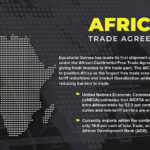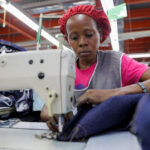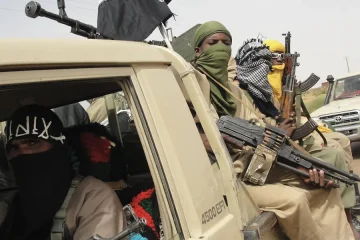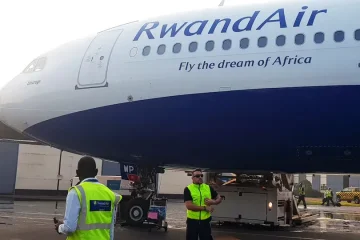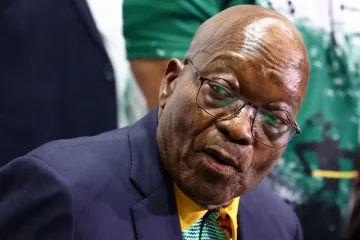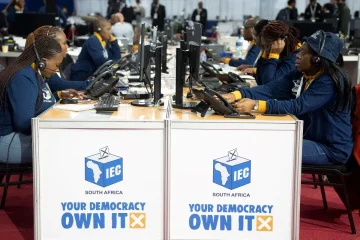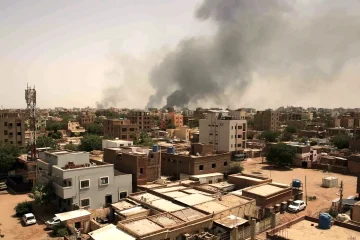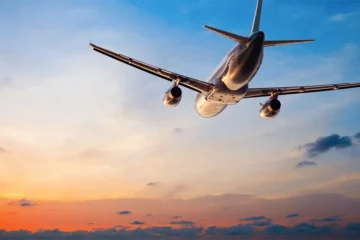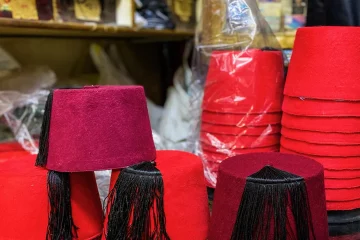AFRICA’S share of global trade remains disproportionately small, hovering around 2%-3%. Countries on the continent trade more with the rest of the world than they do among themselves. Africa needs to improve its share of trade to boost growth and reduce poverty.
Aid for Trade is a development initiative that seeks to remove barriers to trade facing developing countries. International trade and development economics professor Bedassa Tadesse, who recently co-wrote a paper on Aid for Trade, unpacks what the initiative is doing to solve Africa’s trade problems.
What’s Africa’s state of trade?
Despite the continent’s immense resources and untapped potential, Africa’s share of global trade remains small. It is estimated, for instance, that Africa could annually be generating US$21.9 billion more from exports to the world. This limits the continent’s economic growth and ability to lift millions out of poverty.
Trade among African nations is also low, at about 16% of the continent’s total trade volume. This is much lower than intra-regional trade levels in Europe (68%) and Asia (59%).
These statistics have serious implications. Enhancing Africa’s trade within the region and globally could spark development, create jobs and reduce poverty.
A host of challenges get in the way of Africa’s trade potential. The continent faces infrastructural deficiencies, cumbersome trade regulations, and inadequate logistical support. These barriers inflate business costs and deter trade within the continent and with the rest of the world.
Why is trade with other nations important?
International trade is a powerful tool for economic growth and consumer welfare. It allows nations to use their comparative advantages, tap into larger markets, and benefit from economies of scale. It promotes the spread of knowledge and technology across borders, stimulating innovation and productivity. By fostering cultural exchange and interdependence among nations, trade also contributes to peace and stability.
To get the full benefits of trade, countries and regions need sound policies and institutional frameworks that ease global market integration and simplify trade.
What’s Aid for Trade, and how does it work?
Aid for Trade is an initiative that is being spearheaded by the World Trade Organisation. Launched in 2005, it’s aimed at helping developing countries, particularly the least developed ones, to increase trade. The initiative has enhanced the infrastructure and trade capacity of recipient countries, increasing export performance. But there are still challenges around integrating countries into global markets.
The initiative’s projects target trade-related challenges in five main areas:
- trade policy and regulations: frameworks to enable smooth international trade operations
- trade infrastructure: aid for developing roads, ports, communications and energy systems
- productive capacity: ability to produce goods and services competitively for the global market
- trade-related adjustment: support to manage the impacts of trade reforms and integration into the global economy, such as lower tariffs and fewer preferences.
A staggering US$647.4 billion was disbursed under the initiative to 146 developing countries from 2006 to 2022. In 2022, disbursements from the initiative to developing countries reached US$51.1 billion, benefiting 178,141 projects. It’s been seen to lower trade costs, increase trade volumes and create jobs in the countries involved.
Like traditional aid, the beneficiary countries receive demand-driven funding from donors to finance their priority projects. But these must be trade-related, and the package includes technical assistance and technical cooperation. Also, unlike traditional aid, funds allocated may not always translate into direct financial inflows that support a recipient’s broader development goals.
Has it worked for Africa?
Africa has been the second biggest beneficiary of the Aid for Trade initiative after Asia. Under the initiative, countries on the continent received a total of US$233.18 billion from 2006 to 2022. This accounted for 36% of the total disbursements extended to all developing countries. It covered infrastructure, capacity building, policy and adjustment costs.
Geographical and logistical challenges often inflate trade costs in Africa. That’s why the initiative mostly funds projects like port facilities, trade corridors and telecommunications infrastructure across the continent.
In our recent analysis, we examined the initiative’s impact on trade costs. We found that the initiative’s trade cost reduction effects were higher among African countries with relatively good infrastructure networks.
What are Africa’s key success stories?
Aid for Trade projects have improved transport networks, customs procedures and trade-related institutions.
The success stories from Africa include:
- The Busia One-Stop Border Post Project between Uganda and Kenya. The project was launched in 2010 with funding from the World Bank’s East African Trade and Transport Project. It aimed to reduce the average border crossing time by 30%. The project has since cut the average time it takes to cross from Busia (Uganda) to Busia (Kenya) by 80%. The customs processing time in Busia, Kenya, is now down by 98%, while that of Busia, Uganda, has dropped by 69%.
- The Chirundu Border Post in Zimbabwe. This pilot project was launched in 2005 with funding and technical assistance from the Japan International Co-operation Agency and the World Bank. The upgrade has enabled faster movement of people, vehicles and goods between Zimbabwe and Zambia.
- The East Africa Trade and Transport Facilitation Project. Launched in 2006, it aimed to improve traffic flow on the corridor linking Mombasa seaport in Kenya to Kampala (Uganda), Kigali (Rwanda), the DRC and South Sudan. It was funded by the World Bank at US$260 million, and supported by the African Development Bank, the EU, Japan, and the UK. The project has reduced transit times from Mombasa to Kampala from 15 to 5 days and cut average waiting times at Mombasa port from 19 to 13 days.
These projects are all supported by multilateral agencies and bilateral sources of Aid for Trade funding. Their success shows the initiative can lower trade barriers and enhance economic efficiency across the continent.
What remains to be done?
Africa still faces capacity constraints. It has limited funds for research and development, low capability to negotiate trade issues, and challenges in meeting multilateral trading commitments. Market access difficulties, such as restrictive rules of origin, also continue to undermine the Aid for Trade gains. Weak institutional frameworks, infrastructure deficiencies and widespread corruption still inflate the region’s trading costs. Matters are also complicated by poor regional coordination, varying regulations and conflicting standards across borders.
What’s needed are:
- institutional capacity
- transparency
- accountability in aid administration
- robust monitoring and evaluation mechanisms.
The Aid for Trade projects should also match the developmental priorities of recipient countries.
Countries need to develop policies that create a favourable business environment. This means reducing bureaucracy, enhancing judicial independence, and protecting investor rights.
Finally, countries should commit to regional cooperation to boost intra-African trade. This includes harmonising customs regulations and standardising trade documentation. It also means investing in continent-wide infrastructure projects that link local markets to major trade hubs.
BEDASSA TADESSE, Professor of Economics, University of Minnesota Duluth
- This article is republished from The Conversation under a Creative Commons license. Read the original article.

